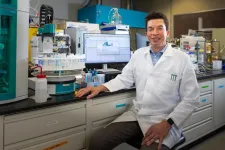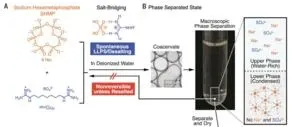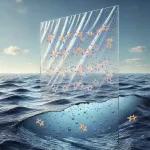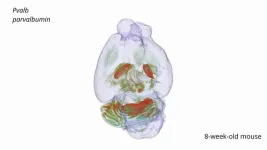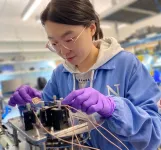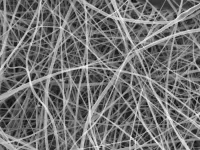Researchers identify previously unknown compound in drinking water
New research outlines the discovery of a new compound formed by the decomposition of inorganic chloramine disinfectants in drinking water
2024-11-21
(Press-News.org)
A team of researchers from the United States and Switzerland have reported the discovery of a previously unknown compound in chloraminated drinking water. Inorganic chloramines are commonly used to disinfect drinking water to safeguard public health from diseases like cholera and typhoid fever. It’s estimated that more than 113 million people in the United States alone drink chloraminated water.
The researchers have now identified chloronitramide anion, chemically expressed as Cl–N–NO2−, as an end product of inorganic chloramine decomposition. While its toxicity is not presently known, its prevalence and similarity to other toxic compounds is concerning and warrants further study to assess its public health risk. Simply identifying the compound has been a challenge and breakthrough.
Julian Fairey, an associate professor of civil engineering at the University of Arkansas, was the first co-author on the paper published in Science. Fairey noted that researchers have known about the compound for decades but have been unable to identify it. He himself began trying to unravel the mystery 10 years ago.
“It’s a very stable chemical with a low molecular weight,” Fairey said. “It’s a very difficult chemical to find. The hardest part was identifying it and proving it was the structure we were saying it was.”
This included being able to synthesize the compound in his lab, which had never been done before. Samples were then sent for analysis to his colleague and co-first author on the paper, Juliana Laszakovits, a postdoctoral researcher at ETH Zurich.
Inevitably, there will be questions about the health risks posed by this new compound, which could not be previously evaluated in any toxicity studies.
Fairey, who studies the chemistry of drinking water disinfectants, explained in a previous interview: “It's well recognized that when we disinfect drinking water, there is some toxicity that's created. Chronic toxicity, really. A certain number of people may get cancer from drinking water over several decades. But we haven't identified what chemicals are driving that toxicity. A major goal of our work is to identify these chemicals and the reaction pathways through which they form.”
Identifying this compound is an important step in that process. Whether chloronitramide anion will be linked to any cancers or has other adverse health risks will be assessed in future work by academics and regulatory agencies, such as the U.S. Environmental Protection Agency. At the very least, toxicity studies can now be completed on this compound thanks to this discovery.
“Even if it is not toxic,” Fairey explained, “finding it can help us understand the pathways for how other compounds are formed, including toxins. If we know how something is formed, we can potentially control it.”
Joining Fairey and Laszakovits as co-authors on the paper are Huong Pham, Thien Do, Samuel Hodges, Kristopher McNeill and David Wahman. Pham, Do and Hodges are all former Ph.D. students at the University of Arkansas who contributed to this research in Fairey’s lab. In 2022, McNeill hosted Fairey at ETH Zurich as a visiting professor as part of his sabbatical where they worked with Laszakovits on this study. Wahman is a longtime collaborator with Fairey’s lab group and is a research environmental engineer at the U.S. Environmental Protection Agency.
END
ELSE PRESS RELEASES FROM THIS DATE:
2024-11-21
Many public water systems in the United States use inorganic chloramines to disinfect drinking water, but their decomposition products have long been a mystery. In a new study, researchers report the discovery of chloronitramide anion – a compound whose existence, though not identity, has been known for 30 years. Detected in the tap water of millions of Americans, this compound’s toxicity remains untested, prompting calls for immediate toxicological evaluation and raising questions about the safety of chloramine in public water supplies. For over a century, chemical disinfection of public water ...
2024-11-21
Cultural complexity in chimpanzees depends on migration and interaction between groups, echoing early human patterns of cultural evolution, researchers report in a new study. The findings offer insight into the development of cumulative culture in early hominins. Culture, defined as a set of socially learned behaviors, has been increasingly documented across various animal species. However, human culture stands out for its complexity and cumulative nature, where cultural knowledge builds upon previous innovations. While chimpanzees – humans’ closest relatives – demonstrate a variety of cultural ...
2024-11-21
For the first time, scientists have directly measured the hearing range of minke whales, discovering that the species can detect high-frequency sounds as high as 90 kilohertz (kHz), according to a new study, demonstrating hearing sensitivity far greater than previously believed. The findings suggest that baleen whales – the planet’s largest mammals – may be even more impacted by anthropogenic ocean noise than currently recognized but have been excluded from regulatory consideration due to underestimated hearing ranges. ...
2024-11-21
By mapping global ship traffic and whale habitats, researchers found that 92% of whale habitats overlap with shipping routes, illuminating hotspots for whale-ship collision risk, according to a new study. Although only 7% of high-risk areas currently contain management strategies to reduce ship strikes, the findings show that expanding efforts to just 2.6% of the ocean’s surface could significantly reduce these fatal collisions, aiding whale conservation amid booming global shipping. “Mitigating the negative environmental impacts of marine shipping is essential ...
2024-11-21
Researchers led by Takuzo Aida at the RIKEN Center for Emergent Matter Science (CEMS) have developed a new durable plastic that won’t pollute our oceans. The new material is as strong as conventional plastics and biodegradable, but what makes it special is that it breaks down in seawater. The new plastic is therefore expected to help reduce harmful microplastic pollution that accumulates in oceans and soil and eventually enters the food chain. The experimental findings were published Nov 22 in Science.
Scientists have been trying to develop safe and sustainable materials that can replace traditional plastics, which are non-sustainable and harm the environment. While ...
2024-11-21
How can Artificial Intelligence (AI) help accelerate scientific discovery based on vast amounts of experimental data? A new study by Prof. LI Weixue's team from the University of Science and Technology of China (USTC) of the Chinese Academy of Sciences shows how this can be achieved in heterogonous catalysis. The results were recently published in Science.
By integrating interpretable AI with experimental data, domain knowledge, and first-principles simulations, the researchers established a general theory of metal-support interaction (MSI), which is one of the most important pillars in catalysis.
Supported metal catalysts ...
2024-11-21
Researchers at Karolinska Institutet and Karolinska University Hospital have developed a groundbreaking microscopy method that enables detailed three-dimensional (3D) RNA analysis at cellular resolution in whole intact mouse brains. The new method, called TRISCO, has the potential to transform our understanding of brain function, both in normal conditions and in disease, according to the new study published in Science.
Despite great advances in RNA analysis, linking RNA data to its spatial context has long been a challenge, especially in intact 3D tissue volumes. The TRISCO method now makes it possible to perform three-dimensional RNA imaging of whole ...
2024-11-21
Northwestern University scientists have developed a new protective coating that significantly extends the life of perovskite solar cells, making them more practical for applications outside the lab.
Although perovskite solar cells are more efficient and less expensive than traditional silicon solar cells, perovskite has, until now, been limited by its lack of long-term stability. Typically, perovskite solar cells uses an ammonium-based coating layer to enhance efficiency. While effective, ammonium-based layers degrade under environmental stress, such as heat and moisure.
Northwestern ...
2024-11-21
The world’s thinnest spaghetti, about 200 times thinner than a human hair, has been created by a UCL-led research team.
The spaghetti is not intended to be a new food but was created because of the wide-ranging uses that extremely thin strands of material, called nanofibers, have in medicine and industry.
Nanofibers made of starch – produced by most green plants to store excess glucose – are especially promising and could be used in bandages to aid wound healing (as the nanofiber mats are highly porous, allowing water and moisture in but keeping ...
2024-11-21
The hippocampus is one of the most fascinating brain regions. Associated with the formation of memories, it also helps us to navigate through the world without getting lost. Sensory cortices on the other hand play an important role in how we perceive our environment and make appropriate movements, and how our brains determine what to focus on and what to ignore. While both regions have been extensively studied and many of their secrets revealed, there is still a lot we do not understand about them due to the high complexity of ...
LAST 30 PRESS RELEASES:
[Press-News.org] Researchers identify previously unknown compound in drinking water
New research outlines the discovery of a new compound formed by the decomposition of inorganic chloramine disinfectants in drinking water
